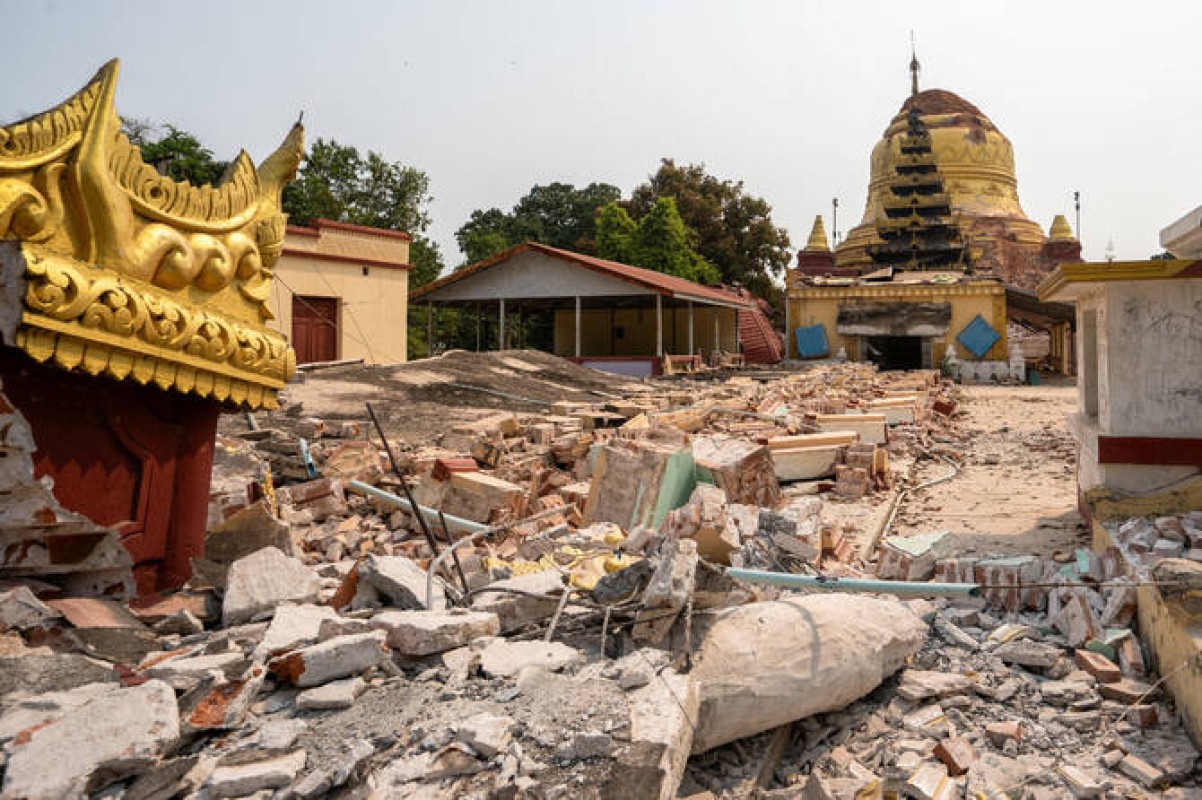Earthquake damage across 10 regions/states, estimated at over 3.8 billion kyats

475

Htet Nadi (NP News)-June 5
The initial damage to 10 regions and states, including the Naypyidaw Council, was estimated at Ks3,804.549 billion, according to the Chairman of the National Disaster Management Council, Senior General Min Aung Hlaing.
Senior General Min Aung Hlaing, made the following remarks while delivering his speech at the second donation ceremony for the people affected by the Mandalay earthquake and for the rehabilitation work, held at the Bayintnaung Yeikthain Naypyidaw on May 29.
In his address, it was reported that the devastating earthquake impacted 374 wards, 944 village-tracts, and 2,081 villages across ten regions and states, including the Naypyidaw Council Area. A total of 162,167 households and 506,069 people were affected. The disaster resulted in 3,739 deaths, 5,104 injuries, and 68 people reported missing.
The quake caused extensive damage, including the destruction of 51,210 homes, 431 roads, 103 bridges, rail lines at 83 locations, and 11 railway bridges. It also affected 6,730 mobile phone centers, ten national grid cable lines, 3,435 communication towers, 594 irrigation systems, six dams, 11,338 government buildings, 384 hospitals, 364 dispensaries, and 166 historical sites and museums. Additionally, 2,409 basic education schools, 72 higher education institutions, 90 private schools, 6,469 pagodas, and 5,588 monasteries, nunneries, and other religious structures were damaged. The disaster also hit 344 private industries, 78.5 acres of farmland, and resulted in the loss of 133,700 livestock. The total estimated economic loss amounted to Ks 3,804.549 billion at current market value.
He also stated that, in response to the earthquake disaster, the Disaster Management Centre (DMC) was established on March 29, 2025, under the National Natural Disaster Management Committee. Task-specific committees were formed to systematically implement relief operations, including the provision of temporary shelters, access to clean drinking water, and the distribution of essential food and consumer goods through mobile markets.
Key emergency needs—such as restoring communications and electricity, and setting up temporary shelters ahead of the rainy season—were also addressed. In addition, temporary health clinics were established to deliver necessary medical care, including treatments and surgeries.
He noted that international humanitarian assistance was welcomed during the relief efforts. Several countries and organizations—including the People’s Republic of China, India, the Russian Federation, AHA Centre, Vietnam, Bangladesh, Thailand, Indonesia, Pakistan, Belarus, Laos, the Singapore Red Cross Society, Nepal, the UAE, Brunei, and Malaysia—provided relief supplies, which were promptly distributed to affected populations.
Senior General said that he personally visited the earthquake-stricken areas and the injured patients being treated in hospitals after the earthquake on March 28. He has visited the earthquake-stricken areas a total of 15 times to date and provided necessary assistance and guidance. He also identified five levels of search and rescue operations, and fully involved local forces. In addition, he carried out emergency search and rescue operations in cooperation with search and rescue teams from foreign countries. As a result of such operations, 653 people trapped in buildings were rescued alive and 806 dead were identified and recovered.